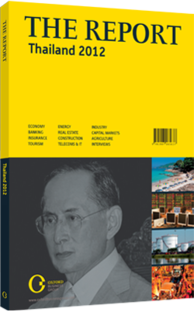OBG talks to Charamporn Jotikasthira, President, the Stock Exchange of Thailand (SET)

Interview: Charamporn Jotikasthira
How can liquidity be encouraged and developed?
CHARAMPORN JOTIKASTHIRA: Liquidity in the Thai equity market has already improved remarkably over the past two years, and our liquidity is now among the best in the entire ASEAN region. In 2009, the Thai equity market’s trading value was 45% of that for Singapore, which is the centre for capital markets in ASEAN. Liquidity of the Thai market was as high as 95% of that of Singapore in the second half of 2010. There were some months in which liquidity of the Thai equity market even exceeded the market in Singapore. In 2011, it rose to 83%, and would have been higher had Thailand not experienced the flood.
SET50 index futures in our derivatives market have been well utilised by investors. Trading volume grew by 154% in 2011. Investors may also use SET50-based exchange-traded funds (ETFs) listed on the SET and the world’s leading exchanges, including NYSE Euronext-Paris, Deutsche Börse, and the Tokyo and Hong Kong exchanges, to gain exposure and manage risks associated with investing in Thai equities.
What is the outlook for a new supply of equities?
CHARAMPORN: In 2012 we expect a new supply of roughly BT120bn ($3.8bn) in market capitalisation on the first day of trading for new listings. We see the desire to list from some airlines, mining and possibly energy companies. Many of these initial public offerings (IPOs) are close to finishing their filings with the Thai Securities and Exchange Commission (SEC). Various new funding instruments in the capital market will be introduced. Regulations for Real Estate Investment Trusts are nearly done. Infrastructure fund and retail bond platforms would reduce financing costs for government projects. The newly appointed secretary-general of the SEC favours market development, so we should be seeing new products that will help develop our capital markets and serve demand from investors as well as the need to raise capital. The removal of withholding tax on dividends will help.
How does global volatility affect the pace of IPOs?
CHARAMPORN: The number of listings on the Thai market depends more on the growth and capital requirements of our own companies than on the volatility of global markets. Some firms affected by the flood in 2011 have to think about whether they need more capital. A viable alternative is the equity market. In the past year or two, contagion from developed markets has been limited. SET index performance and profits of Thai-listed firms have been resilient. Since 2010 the Thai equity index has increased by 48%, while the Dow Jones in the US has risen by only 17% and Euro STOXX 50 has fallen by 17%. Once solutions to the European debt crisis are agreed, capital will start to flow. Thailand and the ASEAN region will prove attractive thanks to rapid growth and strong balance sheets, particularly for Thai-listed firms, which pay some of the highest dividends in the world.
What niche can Thailand forge for itself within more integrated ASEAN capital markets?
CHARAMPORN: If you look at Thailand’s market capitalisation, the energy and banking sectors dominate. But ASEAN as a whole is more balanced: Malaysia has significant plantation stocks, and Singapore has large health care and shipping sectors, for instance. Investors can diversify into other segments without physically being present in markets other than Thailand. We also see opportunities in economic growth, liquidity and the savings pool in ASEAN states. Therefore, we would like to promote more intra-regional investment activity. Thailand is situated in one of the world’s highest-growth regions and is surrounded by Cambodia, Laos and Myanmar, which are generating a lot of interest. Thai-listed companies that plan to expand their footprint in these high-growth countries will need to raise capital and could take advantage of Thai capital markets. Recently we have been helping the Laos stock market, as we believe that the region should work together to generate greater investor interest.
You have reached the limit of premium articles you can view for free.
Choose from the options below to purchase print or digital editions of our Reports. You can also purchase a website subscription giving you unlimited access to all of our Reports online for 12 months.
If you have already purchased this Report or have a website subscription, please login to continue.

